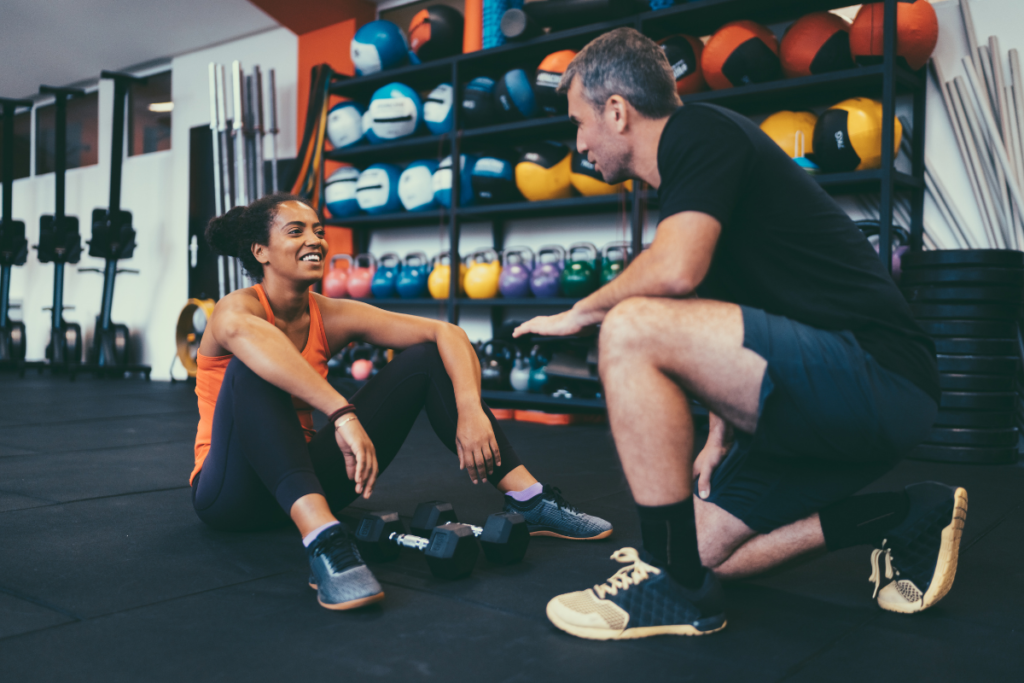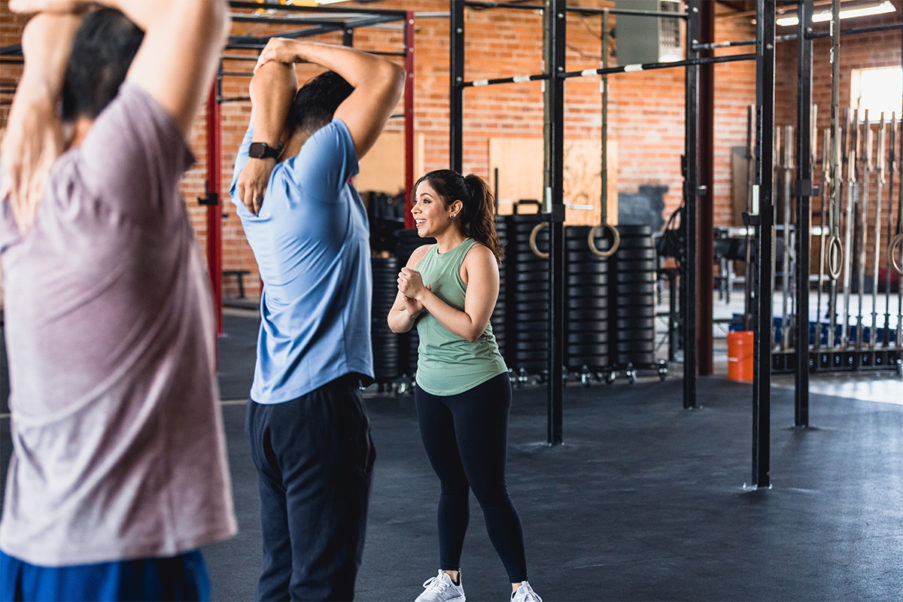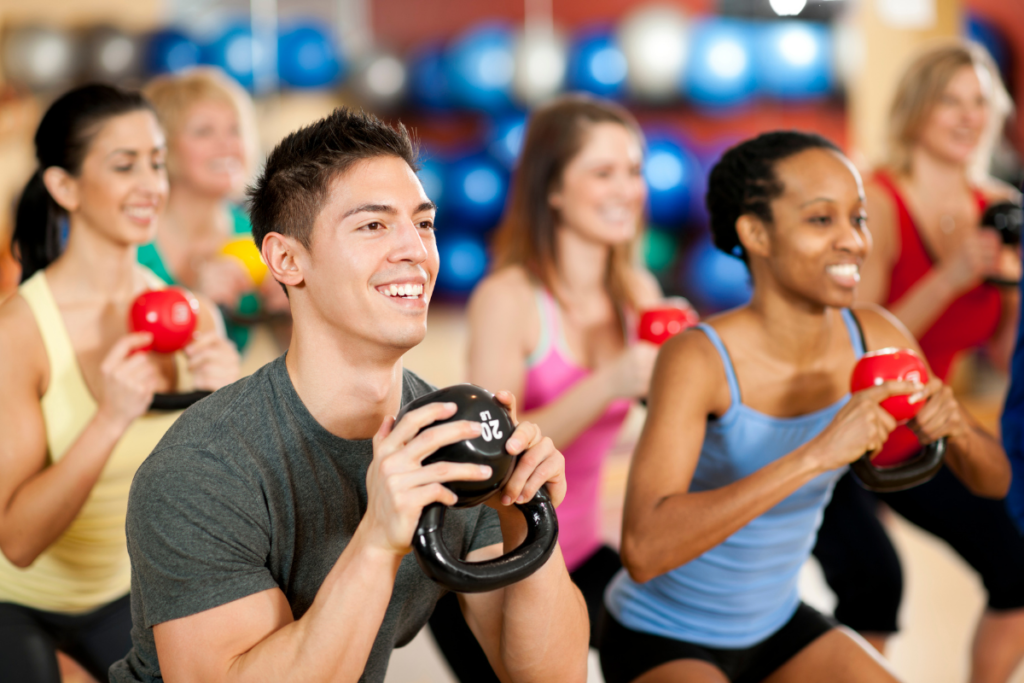Biomechanic Basics for Safe, Effective, Efficient Workouts
Use your knowledge of biomechanics to design, implement and lead exercises that will help your clients achieve their goals.
To most people, personal trainers are the solution to a huge problem: unsafe, ineffective and inefficient workouts. When the three goals of kinesiology and applied biomechanics—safety, effectiveness and efficiency (Hamilton, Weimar & Luttgens 2008)—are met, it results in successful participation in physical activity and improvements in the physical and physiological factors associated with fitness.
In order to bridge the gap between knowledge and application in biomechanics and applied kinesiology, it’s important first to define the three operational or “real-world” goals. Consider them the guidelines that govern the discipline. They are a framework for developing and implementing programs, as well as the best way to prepare fitness professionals for the workforce.
Safety is correct exercise biomechanics or form. The purpose of safe movement is to avoid doing harm to the body. For example, during a safe lunge the exerciser’s knee is aligned over the ankle, while during an
unsafe, mechanically incorrect lunge the knee extends beyond the toes. It is important to note that exercise safety is determined for each client based on individual factors such as fitness level, age, balance, and bone and joint health. A squat jump provides an example of individual factors determining safety. This exercise is safe for a healthy, 20-year-old female, yet not recommended for a woman over 65 with osteoporosis.
Correct biomechanics will keep you and your client safe. We’ve all heard members say, “I’m not sure if I’m doing it right.” One of the many reasons people hire a personal trainer is to show them how to perform exercises properly. When the goal of safety is kept in mind, you decrease the likelihood of injury to your client and increase program adherence. You also decrease the risk that a claim of professional negligence can be made against you.
Effectiveness is results. It is measured as either success or failure. Another common reason people hire a personal trainer is to help them structure an exercise program so they can reach their fitness goals. You’ve heard clients say, “I feel like I’m wasting my time in the gym” or “I’ve been working out for 3 months and cannot see any difference.”
The two components of effectiveness are program design and implementation. To design and implement effective programs, you need to do four things: define the program’s goals; select exercises that meet those goals (have a measurable outcome); verify that the exercises are appropriate for the individual client; and make certain during the training session that the intended muscle is activated without any compensation from other muscles or muscle groups.
Efficiency is the degree of ease with which clients achieve safe and effective movements. An efficient movement is a correct one that is completed with the least possible amount of effort. When your client easily completes 20 push-ups with correct form, that is efficient. A person who cannot complete 20 push-ups without arching the back or dropping to the floor is working inefficiently. >>
Neural factors influence efficiency. While people are learning motor skills, they have to think about what they’re doing, which takes up most of their available neural resources. The mechanism is this—the brain has to be trained to activate specific muscles in a specific order in a specific time sequence. Mastering this takes time and repetition. Another influencing factor is age. An older brain is less plastic than a younger one, and the connections are not there, so it becomes harder to learn new skills as you age. To help novices or older exercisers become “exercise efficient,” you should select exercises that don’t require a lot of cognitive effort.
Think about the three goals of kinesiology plus applied biomechanics. Now apply those to the new gym member or client. New exercisers are of concern to staff and floor trainers, who see these clients for only a few minutes and are then faced with the daunting task of creating an exercise plan for them. The structure and movement capability of every person’s body are different. The ability to quickly assess a person’s movement capabilities makes the difference between a fitness program that is safe, effective and efficient and one that is not. This is where biomechanics basics come into play just knowing a few quick assessment tools gives trainers valuable information about appropriate exercise selection in a matter of seconds.
Here is an example of a quick biomechanical analysis: Look at the person, and look for lines created first by the spine and then joint to joint. Any deviations? Next, visualize the forces that will act on the client during exercise, and determine if those forces are appropriate for that body. For example, I recently heard a trainer suggest a supine, straight-legged abdominal exercise to an elderly, overweight woman. This was clearly the wrong exercise choice. Such an exercise selection would result in a movement that was unsafe, ineffective and inefficient.
Another way to look at the three goals is to consider functional training. Although it has become popular in the literature, functional training may not meet the goals of clients who want to increase muscle strength, as the total workload is limited by the weakest muscle used during the movement (Bryant & Green 2003). Isolated strength training exercises would be a better choice in this scenario. Functional training also requires learning, balance and coordination that may be unsuitable for new or older exercisers.
Look for these biomechanical changes to determine if a movement is unsafe, ineffective or inefficient:
A Change in Movement Pattern. One example would be seeing a client elevate the shoulders during a lateral deltoid raise, which would indicate that she is tired and using the trapezius to help the deltoid lift the weight.
A Shift in Body Weight. When an
exercise becomes too difficult to complete, a common compensation is to shift the body weight. For example, if a front deltoid raise becomes too difficult to complete correctly, the exerciser will straighten the legs and back and use the entire body to thrust the arms up.
Forward Flexion. When the body slumps forward, it is acting with gravity (Floyd 2009). Muscles have to work to fight the influence of gravity, yet when we get tired, we succumb to its effects.
A Flexed or Bent Joint. This does not mean a “soft” joint. It means the joint is bent or flexed to the point where the muscle is ineffective because it is shortened so much. For example, in a standing biceps curl the muscle produces very little force when the joint is bent at the top of the movement and the muscle is very short. A bent joint can indicate that the working muscles are fatigued. A short muscle is an ineffective and inefficient muscle. If a muscle is too short, it cannot produce sufficient force. The force-length curve states that a muscle produces its greatest force or tension just beyond resting length or slightly stretched (Floyd 2009).
Participation in exercise programs is critical to the maintenance of physical fitness. For many people, perceived obstacles stop them from participating in fitness. However, when the three goals of kinesiology are kept in mind, it becomes easy to design, implement and lead effective exercise programs for everyone.
1. Use natural movement patterns, such as walking or cycling.
2. Use the same movements repeatedly within and between sessions.
3. Design programs and sessions in building blocks or logical sequences.
4. Minimize the degrees of freedom—that is, number of joints involved. For any movement, the greater the number of joints involved, the more degrees of freedom there are. This is why a walking lunge is more difficult than a seated leg extension.
5. Minimize intersegmental coordination (movements that decouple the arms and legs). Intersegmental coordination involves having a client do something different with the arms and the legs at the same time; for example, a squat with an overhead press.
6. Choose bilateral exercises for equal and opposite workload on both sides of the body.
7. Evenly distribute forces across the body to minimize point of impact. Think about force this way—if a 5-pound weight dropped on your foot, it would hurt. However, if 5 pounds were broken up and hit the entire surface of your body evenly, it would barely be noticed.
8. Displace forces horizontally, not vertically. This is the difference between a force applied horizontally to the spine in a supine position versus a force applied vertically or downward along the spine. For example, if you are doing a supine hamstring stretch, don’t push down on the client’s leg in a way that applies force to her body and spine. Apply the force parallel to her body. That displaces the forces away from her and makes the stretch safer for her.
Think in terms of business strategy. Your job is to create custom fitness programs tailored to your clients’ goals and abilities. Define your niche by specifying a biomechanics framework. This is a specific set of skills, movements, patterns and timing that you use. It is how you instinctively make movement flow without thinking about it.
A business example of a biomechanics framework is the pain management programming offered by Justin Price, MA, who co-owns The BioMechanics studio in San Diego (Mahoney 2009). The population (people in pain) defines the biomechanics (what movements are used in what sequence). Another example would be a trainer who attracts clients who’ve just completed physical therapy and need careful exercise instruction. That trainer would focus the training on corrective-exercise biomechanics rather than seeking clients who want to be pushed.
New Trainers. The future looks good for fitness professionals. Employment opportunities are expected to increase 27% over the 2006–2016 decade (Bureau of Labor Statistics 2008) Find your area of expertise and turn it into a business, using a diversified skill set. That doesn’t mean you should try to be everything to everyone. But if, for example, you are particularly good with weight loss clients, diversify your marketplace to include locations where those clients are. In addition, focus on learning techniques that are relevant to that population, such as moves that minimize impact forces.
What if you excel at strength training yet don’t hear the musical beat and are not a good choreographer? Focus in that case on the biomechanics of movement, specifically strength and flexibility, where execution and timing are more important than music.
Industry Veterans. Trainers who have been in the field have a distinct advantage—your clients have helped you define your niche. Answer these three questions, and trends will develop that show you where to focus your efforts:
1. What have you been paid for?
2. Where has the bulk of your income come from?
3. Why do people tell you they seek your services?
Create additional income in traditional and emerging markets by focusing on biomechanics applications—whether that means designing specific exercise programs for specific populations or using a preset program in which the movements are designed first and then follow the same order for each class and every exerciser. The key is to determine the biomechanics framework that defines your expertise and execute it within the boundaries of the three goals of biomechanics and applied kinesiology.
References
Bureau of Labor Statistics. 2008. Occupational Outlook Handbook: 2008-09 Edition. www.bls.gov/oco/ocos
296.htm#outlook; retrieved May 19, 2009.
Floyd, R.T. 2009. Manual of Structural Kinesiology (17th ed.). New York: McGraw-Hill.
Hamilton, N., Weimar, W., & Luttgens, K. 2008. Kinesiology: Scientific Basis of Human Motion (11th ed.). New York: McGraw-Hill.
Mahoney, L. 2009. Vast pain relief. Club Business International (May 26).





